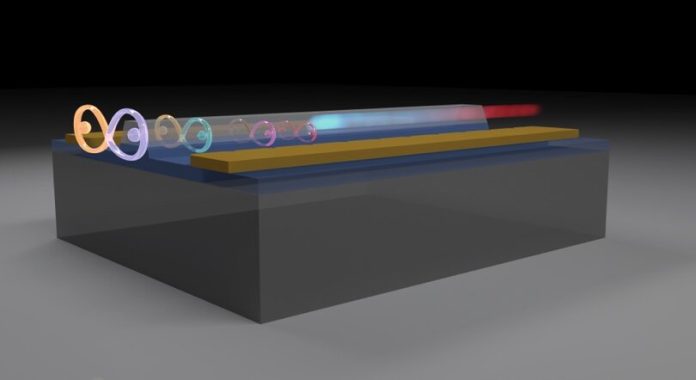
Researchers have developed a new method to efficiently generate photon pairs on a chip, which could significantly improve quantum technologies such as quantum communication, teleportation, and computing.
The discovery involves the use of a material called lithium niobate, which has excellent properties for quantum applications.
This breakthrough could make quantum technology easier to access and implement in real-world devices.
Lithium niobate is an important material in the field of photonics, where light is used to perform tasks that traditionally required electronics.
Recently, thin-film lithium niobate has emerged as a powerful platform for generating photon pairs, which are crucial for many quantum applications.
One way to create these photon pairs is through a process called spontaneous parametric down-conversion (SPDC), where a single photon is converted into two correlated photons with lower energy.
To make SPDC efficient, it’s important to achieve something called “phase matching.”
Typically, this is done using a technique called quasi-phase matching, which involves periodically poling the lithium niobate (PPLN).
However, this traditional method has limitations in terms of efficiency, and it becomes difficult to use in modern nanophotonic devices, where very tiny components are needed.
The new method, called LPLN (layer-wise poled lithium niobate), overcomes these challenges. Researchers achieved LPLN by using electrical poling to create layer-wise domain inversion in thin-film lithium niobate.
This approach not only improves the efficiency of photon-pair generation but also simplifies the fabrication process, making it easier to produce these devices on a large scale.
Interestingly, this breakthrough was discovered by accident. Di Zhu, an assistant professor at the National University of Singapore (NUS), explained that the partial domain inversion was originally seen as a mistake in the fabrication process.
However, it turned out to be unexpectedly helpful in achieving efficient photon-pair generation.
The research team used this new method to combine second-harmonic generation (SHG) with SPDC in a single LPLN waveguide, allowing them to generate photon pairs using standard telecom components.
This simplifies the setup and makes the technology more accessible for practical applications, especially in quantum communication.
Xiaodong Shi, the lead author of the study, noted that the SHG efficiency in LPLN waveguides could be twice that of conventional PPLN waveguides.
The LPLN devices also show excellent performance, even when facing changes in geometry and temperature, which makes them highly promising for use in quantum technologies.
The researchers now plan to improve the performance and scalability of these devices, with the goal of using them in advanced quantum communication and networking systems.
This discovery opens up exciting possibilities for the future of quantum technology, making it more efficient and easier to integrate into everyday devices.



